*This post contains affiliate links. As an Amazon Associate, I earn from qualifying purchases. This means when you make a purchase, I get a commission at no cost to you! Read more about my affiliates on my Affiliate Links Disclaimer.
Give me your best guess. What do you think this animal is?
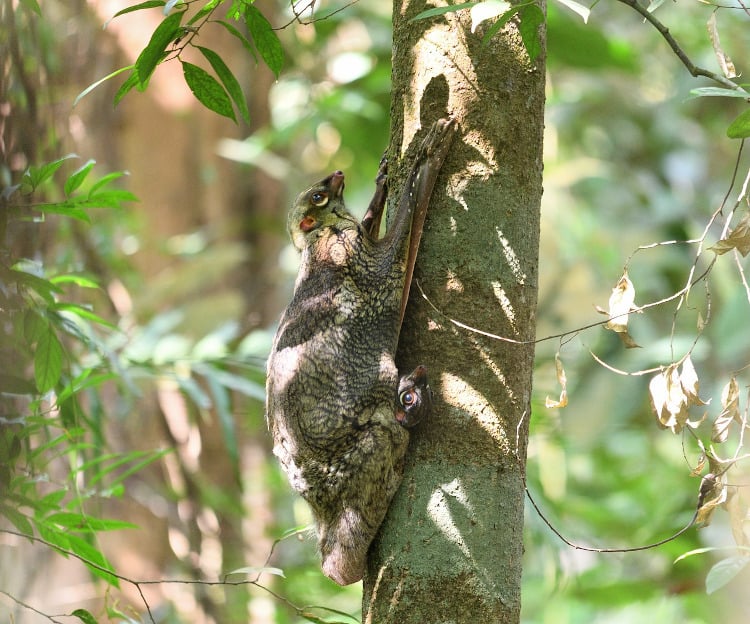
A bat?
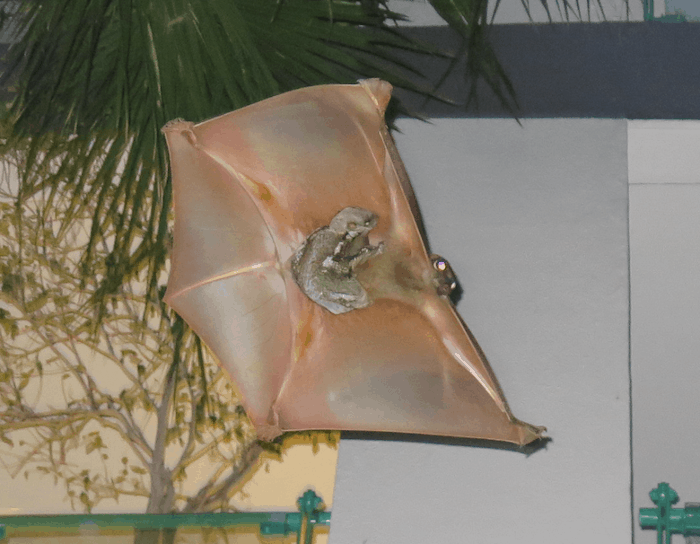
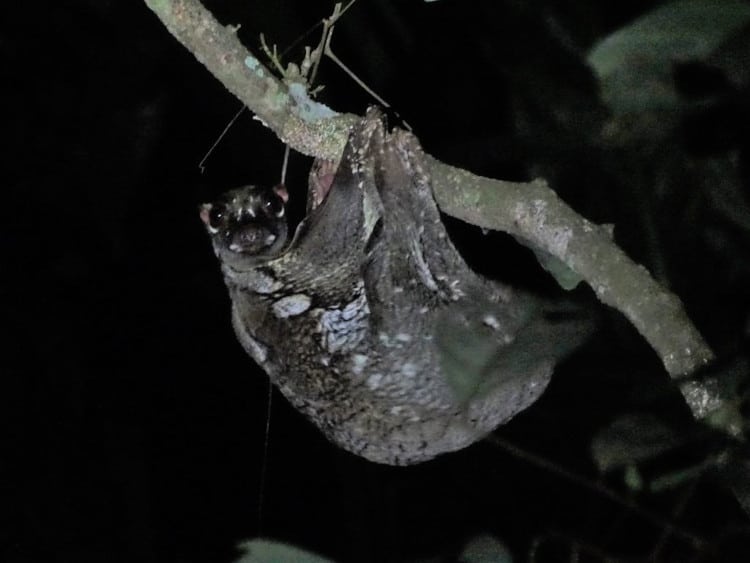
A lemur?
This animal is none of the above. It’s an animal called a colugo (as you can probably tell from the title). But does that really help? I bet not.
If you’re like me, you probably never heard of a colugo (also called a flying lemur, but they are not lemurs and they don’t fly) until you took mammalogy (and if you never took mammalogy, you probably never heard of one). But don’t feel bad. It’s not your fault. No one is talking about how amazing these animals are, so let me take the time here on the Fancy Scientist to tell you about colugos and the super cool-colugo I got to see in Borneo.
There are at least two species of colugos, but likely more. Mason et al. 2016 argue for seven to eight evolutionary significant units (genetically distinct groups) which may be distinct species. Colugos not only have their own family (Cynocephalidae), but also their own order (Dermoptera). If you are not a mammal nerd, let me tell you how cool this is.

Examples of other mammal orders include Carnivora, which includes ~270 species of animals like lions, tigers, and wolves, Chiroptera, which includes 900+ species of bats, and the most diverse Rodentia, with 2200+ species. These (at least) two species have an order all to themselves.
This means that they are different. So different that they do not group with any other animals. Primates (our order) are actually their most recent common ancestor, having diverged ~86 million years ago from them.
[mailerlite_form form_id=0]Although they are not related to flying squirrels, like them, they have developed an extensive membrane (patagium) that attaches to their hands and feet. In fact, the colugo’s patagium is the most extensive of any mammal. It attaches to almost everything. Unlike flying squirrels, they do not have a free tail. It’s all connected!
The extensive membrane allows them to glide (also like flying squirrels) extremely well from tree to tree. They can glide amazing distances – up to 150 meters! That’s much longer than a whole football field!
Like bats and flying squirrels, colugos are nocturnal. But unlike bats, they do not have true flight ; they only glide.
Their extensive membrane also helps them be good mothers. Because their membrane is attached to their tail, they can fold it over and use it as a pouch. They hold their babies in it (too cute). In the video below, you can see the baby pop its head out at around 24 seconds.
Having a membrane attached to your tail has its disadvantages. Colugos have to be careful when they go the bathroom. They have to fold the membrane the other way to make sure it doesn’t get, ahem, dirty. This looks REALLY weird. Check it out in the same video above. The colugo poops at around 55 seconds.
Colugos fly around at night going from tree to tree eating small amounts of leaves. There are some reports of them eating ants. They also have weird comb-shaped teeth that they use to scape and lick branches and groom their fur.
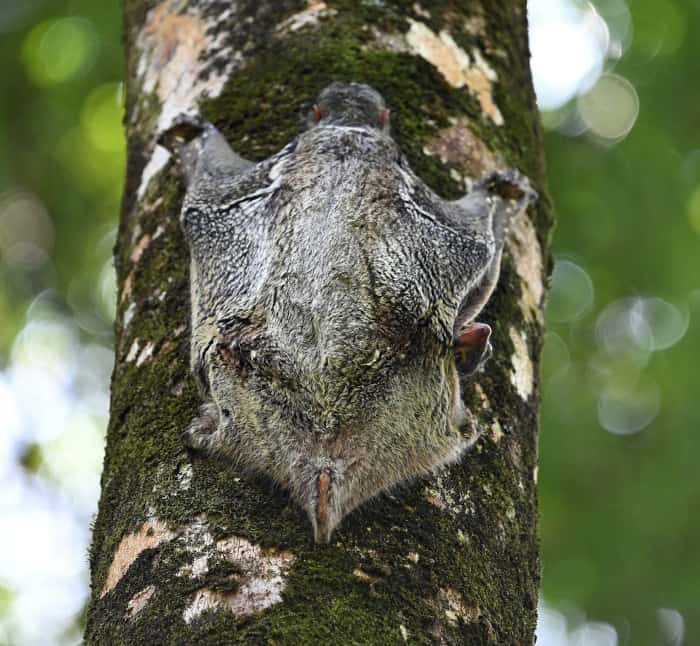
During the day, colugos hang from a branch upside-down or grab onto a tree. Their fur blends in with the tree so predators cannot see them as well. Their predators include pythons, yellow-throated martens, long-tailed macaques, and owls. There are reports of owls preying on colugos when tourists shine spotlights on them at night to see them better.
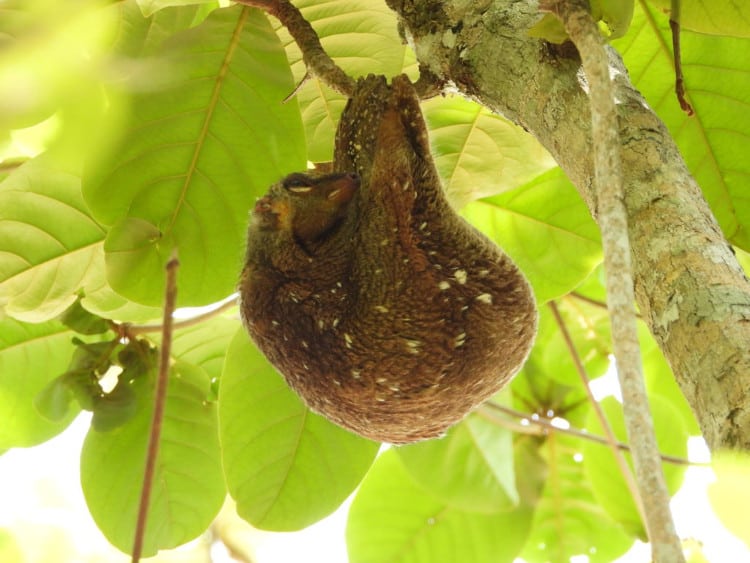
How did we end up seeing a nocturnal animal that camouflages well during the day? We heard it make a loud squeak or chirping-like noise.
Although I wanted to see a colugo so badly, I never thought we would see one because of their amazing camouflage. We saw ours (Sunda colugo, Galeopterus variegatus) at the most unexpected time, when I was on a boat safari in the Kinabatangan River.
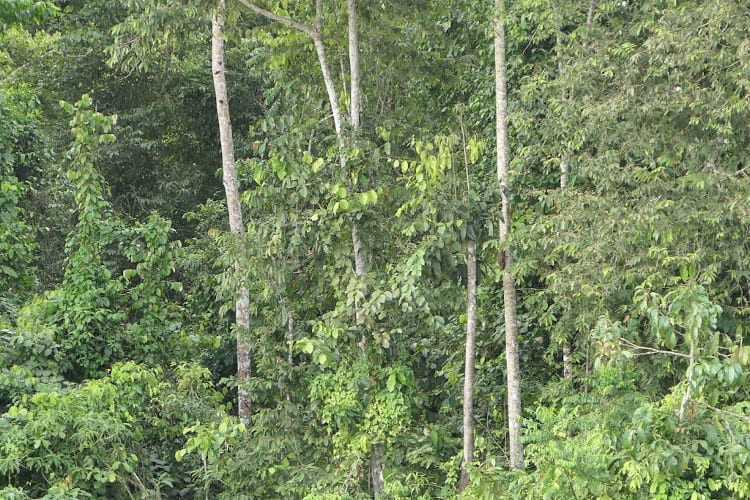
After we heard the squeak, we drove our boat close to the tree with the colugo and was able to get an amazing view. Although the video is wobbly because of the current, the colugo was very tolerant and let us film up pretty close.
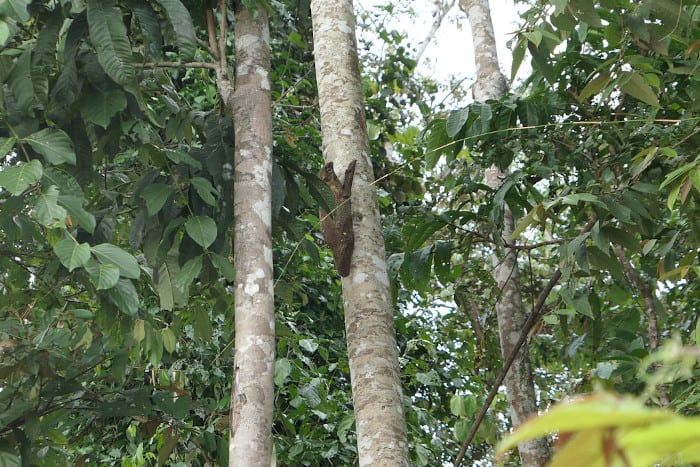
According to Phillips and Phillips (and also mentioned here), there are no captive species of colugos, which makes it really difficult to study their basic biology. There is probably so much more to learn about this unique group of species! It’s so astonishing to me that there are still so many incredible animals out there to learn about.
In addition to the sources cited throughout, I also used the Animal Diversity Web and Phillips and Phillips’ Mammals of Borneo to help me write this post. If you ever get the opportunity to go to Borneo, this book is essential! It not only includes all of the mammals you might see, but lots of information about the ecology of Borneo. I highly recommend it.
For another fun Bornean mammal, check out my post on the Western Tarsier.
Love this post? Share it with friends!



